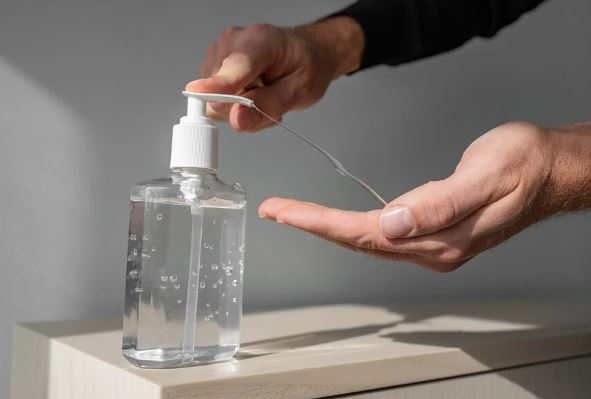All patients with chronic diseases must actively participate in their treatment. So you should know how to give yourself an insulin injection if you have diabetes mellitus.

Insulin is a pancreatic hormone responsible for regulating blood sugar levels. This is applied exogenously in some metabolic pathologies. Are you interested in knowing how to correctly administer an insulin injection? Next we count.
Its administration is part of the treatment protocol for people with type 1 and type 2 diabetes. In this way, it seeks to reduce the blood sugar load and avoid the hyperglycemic state (excess glucose in the blood). According to the World Health Organization (WHO), hyperglycemia was responsible for 2.2 million deaths in 2012.
This substance is usually administered through injections with pre-filled insulin syringes or pens. Both methods seek to mimic the natural absorption and distribution of the hormone in the body. However, injection continues to be the most widely used route of administration worldwide.
Who can give the insulin injection?

Once the patient has acquired the necessary knowledge, administration can be done at home.
Diabetes mellitus is a chronic disease that requires lifelong treatment. For this reason, people who suffer from this pathology must actively participate in its treatment. In initial stages, insulin is administered by health professionals in health care facilities.
In the long term, insulin administration is recommended by affected patients from the comfort of their home. In this way, the control of blood sugar levels in a timely manner is facilitated, thus preventing the appearance of complications. However, the physician must always guide, supervise and ensure the patient’s learning.
Studies establish that to correctly apply an insulin injection it is necessary to know in detail the characteristics of the procedure and the substance. In this regard, the person must take into account the correct way of storing, transporting, preparing and administering the injection by steps.
Necessary materials
Placing insulin with a syringe is usually a fairly quick and easy process. Before starting, it is essential to find and have all the necessary materials on hand. In this way, application delays can be avoided and the risk of errors is greatly reduced.
Insulin
Knowing the type of insulin to be given and the correct loading dose is vital when giving this type of injection. At present, there is a vast list of preparations that vary according to the time of onset of the effect and its duration.
Some studies classify exogenous (foreign-sourced) insulins as basal, prandial, and biphasic or premixed insulins.
U-100 insulin is the most common form of presentation, which contains 100 units of insulin in one milliliter of solution. However, more concentrated forms such as U-300 and U-500 are also available. For this reason it is vital that the doctor explains the calculation and the exact dose of hormone to be used.
Syringe
Plastic insulin syringes are often found in various sizes and capacities. Most usually contain between 0.3 to 2 milliliters of solution, that is, between 30 and 200 units of insulin. The filling will depend on the type of insulin, the dose and the administration intervals prescribed by the specialist doctor.
The needles are usually quite fine, up to 31 gauge, and can be found in different lengths. Those most used in adults range between 5 and 6 millimeters long, however, in pediatric patients it is common to use 4-millimeter needles.
Alcohol and gauze
When giving an insulin injection, it is advisable to have some dressings or gauze that facilitate cleaning the administration area. Similarly, you should have a bottle of alcohol on hand to perform the disinfection. In most cases, a small damp cotton ball is usually sufficient.
Procedure for giving an insulin injection

A good disinfection of the area prevents the appearance of infections.
Before starting, proper hand washing with plenty of soap and water for at least 60 seconds is vital. In this way, it seeks to limit and prevent the risk of infectious complications according to various investigations.
The area where you want to inject insulin should be examined, checking for bruises, wounds, fissures or lumps. Once these aspects are covered, the following steps should be followed:
1.Remove the cap from the insulin bottle and wipe the rubber surface with a cotton pad or gauze moistened with alcohol.
2.Prepare the syringe, removing the cap and placing the corresponding sterile needle.
3.Take the syringe and insert the needle into the rubber of the bottle, then turn the bottle over, leaving the needle submerged in the solution.
4.Pull or slowly retract the plunger of the syringe until the aspirated solution matches the required dose line.
5.Pinch the area of skin where you want to give the injection, lifting a fold of skin between the thumb and index finger.
6.Take the syringe and insert it into the skin at an angle of between 45 and 90 ° between the needle and the surface. 7.In this way, application to the subcutaneous tissue is ensured. Do not forget to close the insulin bottle.
8.Release the skin fold and gradually push the plunger of the syringe until the full insulin dose is injected.
9.Wait 5-10 seconds before removing the needle from the skin.
10.Withdraw the needle gently without rubbing or touching the area.
By having the syringe, it should be placed in a sturdy container that will be discarded in the trash after a while. Be sure to keep all disposable syringes and needles used in it. Needles should not be reused, as there is a risk of infection and reducing the effectiveness of the medicine.
In what areas of the body can it be applied?
The administration of insulin is usually carried out in places that are easily accessible to patients. It can usually be done on the upper outer arm, at the level of the biceps, or on the back of the arm. Similarly, it is applied to the upper and outer region of the buttocks.
It is common to inject into the outer thighs or at the level of the abdomen. In these areas there is more subcutaneous tissue and it is easier to make the pinch that forms the fold. However, when applying it to the arm, it is not necessary to fold it as it is usually more difficult for the patient.
Remember to rotate the injection site
It is advisable to use different parts of the body when giving each insulin injection. In this way, it is sought to avoid the formation of lesions on the skin that can later hinder the effect of insulin. For this, you can develop your own routine administration plan or in collaboration with the treating physician.
It is also advisable to clarify all doubts about the procedure, the doses and the interval of administration with the doctor. Also, if any unusual symptoms or signs are observed, it is important to seek medical help as soon as possible.





